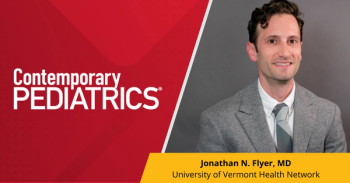
New products for 2006
This year: A CLIA-waived test for blood lead levels, a high-tech hearing screener, nonsurgical help for OME, a quieter electronic stethoscope, great software, and more. Plus, a 25th-birthday salute to the personal computer.
DR. SCHUMAN is adjunct assistant professor of pediatrics at Dartmouth Medical School, Lebanon, N.H., and practices pediatrics atHampshire Pediatrics, Manchester, N.H. He is a contributing editor for Contemporary Pediatrics. He has developed and distributes thePractical Medical Record, an EHR system designed for pediatric practice.
2006 will be remembered as a year in which gasoline prices soared, then plummeted; the stock market hit a record high; and the solar system was quietly downsized to eight planets. Pediatricians will remember this year as one in which the childhood immunization schedule grew more complex with the introduction of a new rotavirus vaccine; a varicella vaccine booster dose; a vaccine that protects against measles, mumps, and rubella as well as varicella; and a vaccine for adolescent girls that reduces their risk of cervical cancer. This year, pediatricians received the eagerly-awaited 2006 edition of the Report of the Committee on Infectious Disease and began to implement new evidence-based guidelines for pediatric advanced life support and neonatal resuscitation.
In addition to discussing new products (and one old product) for pediatric practice, this review celebrates the 25th anniversary of the IBM personal computer by highlighting a few examples of outstanding software that no pediatrician should be without.
In DPOAE testing, a probe placed in the ear provides a sound stimulus by simultaneously presenting two pure tones of equal intensity but different frequencies (pitches). The probe then "listens" for the resulting DPOAE with a sensitive microphone. The device is programmed to listen at the frequency of the otoacoustic emissions for each stimulus and to separate the emissions from background noise. The instrument assigns a pass or fail grade for the child's hearing based on an algorithm stored in memory.
Because much of the published research on otoacoustic emissions has been done on newborns, we tend to think of DPOAE as a screening test only for infants in the nursery. It can be used with children of any age, however. The technology, which was developed to test cochlear function, is sensitive to conductive hearing loss and can also provide useful information about middle ear function. Be aware, however, that abnormal results do not distinguish between conductive hearing loss (associated with middle-ear effusion) and neurosensory loss. A hearing deficit caused by a conductive loss disappears as the associated middle ear effusion resolves; neurosensory loss does not. An infant or child who cooperates with tympanometry generally cooperates with DPOAE testing; the test takes about as long to perform as tympanometry does.1
DPOAE can be used to screen any age group during school physicals and to screen for hearing loss associated with a middle-ear effusion. It is especially convenient for use with infants and toddlers, in whom audiometry is problematic.
The Welch Allyn OAE Screener costs about $4,000; the purchase price includes a printer that prints test results on a 2-inch by 4-inch self-adhesive label, which can be placed in the patient's chart. The unit stores as many as 10 readings in memory. It is lightweight, portable, and fast, testing both ears in minutes. Most insurance companies reimburse $50 or more for the procedure.
A novel treatment for OME
In 2004, the American Academy of Pediatrics issued new guidelines for managing otitis media with effusion (OME).2 The guidelines recommend surgical intervention-insertion of tympanostomy tubes-if OME persists longer than three months and is accompanied by a documented hearing loss.
Treating OME with tympanostomy tubes is associated with scarring of the tympanic membrane and recurrence of OME, particularly if tubes are extruded prematurely. Therapies such as decongestants, steroids, and antibiotics are considered to be ineffective alternatives to tympanostomy tubes for persistent OME associated with hearing loss.
Newsletter
Access practical, evidence-based guidance to support better care for our youngest patients. Join our email list for the latest clinical updates.









